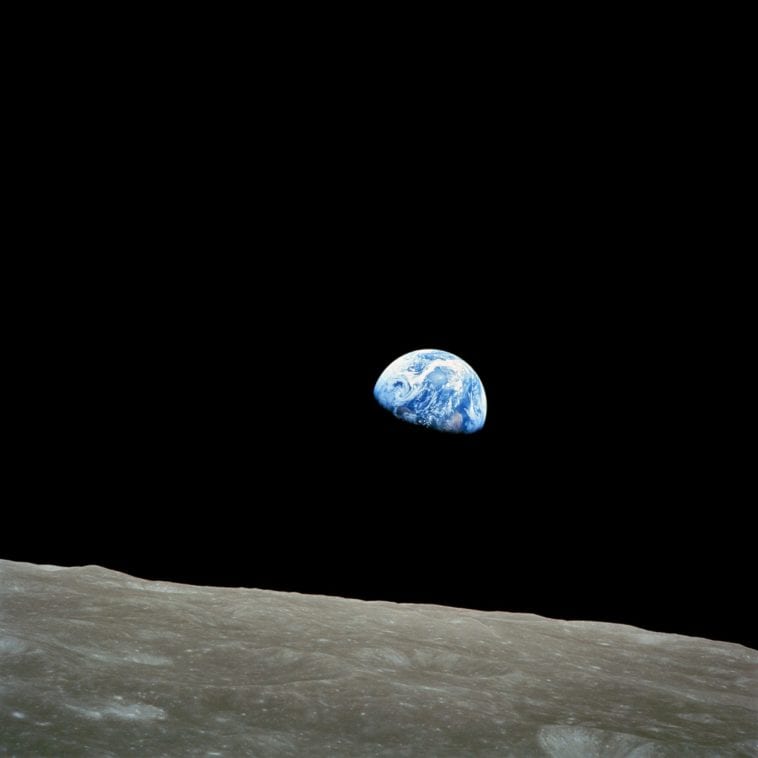Carl Sagan has died more than two decades ago but he left a profound legacy – the Pale Blue Dot.
They say learn how to appreciate what you have before it is gone. Before it vanishes into the eternal realm of oblivion. Before it turns into memories. With every resource and property humans possess, it is quite hard to distinguish which ones are worth appreciating. Not only that, but given humans’ innate differences with their principles and personalities, they can also be sentimental in different aspects.
My neighbor perhaps appreciates his roach collections compared to my classmate in middle school who appreciates sports cars more. Our Grade School Principal probably is more grateful for her plants than our current driver’s love for loafers. As you can see, it is evident how humans’ appreciation always varies and often odd if you hear about it the first time.
Contrarily, despite the uniqueness and wide scope of things and matters that humans are grateful for, we still have a commonality. And it is a bit obvious as we are inhabiting what we should learn to appreciate.

Earth, the third planet from the sun, is the only planet known to have free oxygen, oceans of water, and life. Tracing back, Earth is the only known planet where any form of life can survive. Unless Sanctum, or referred to as Planet Alpha, does actually exist.
Now, talk about Earth and its magnificence. Its beauty and the lives growing in it as days pass by. River flowing mildly with fishes playing along with its currents. The smell of soil after the first drop of rain. The sound of the dog’s bark at night. The couple’s loud argument from their apartment. The sound of drums playing at 3 AM while everyone is sound asleep.
Considering all the wonders and horrors of the Earth, do we, humans, really offer the appreciation that it deserves? Sure, it is simple and easy to say that “Yes! I appreciate the Earth”, “Earth is my home.”, “I donate money for environmental groups.” The appreciation that the Earth needs are more than just compliments and half-baked promises. It comes with actions. Actions that must speak louder than words.
The Man Behind The Pale Blue Dot – Carl Sagan

Ever heard of Carl Sagan’s book, Pale Blue Dot? Familiar right? But before delving in to the book itself, let us first familiarize the man behind the iconic story of this Pale Blue Dot. Carl Edward Sagan was an American astronomer and science writer.
Given his occupation as an astronomer, he was a controversial man back in the days wherein he vocally talks about scientific, political, and religious views. However, he was known for his love and passion for studying the universe, especially planets, where he was famous for all his astonishing works.
But what really gave him prominence, especially to the public eye, was when he published along with Jerome Agel, The Cosmic Connection: An Extraterrestrial Perspective. In 1980, he cofounded the Planetary Society, which is a nonprofit organization proposed for space exploration. All of these piled up for his successful reputation. But more than that, his book Pale Blue Dot was more than just a book similar to his previously published books.
What Inspired The Pale Blue Dot?
Can you guess what it is about? Carl Sagan’s Pale Blue Dot was inspired by an image taken by Voyager 1 on the fourteenth of February 1990. The spacecraft was departing from the Earth’s premises and planetary neighborhood when it turned around for a while to take a look, once and for all, at its home – Earth.
The Voyager 1 was said to be about 6.4 billion kilometers, equivalent to 4 billion miles away, and an approximate number of 32 degrees above the ecliptic plane, when it took a shot of our home.

Given its close distance with the center of scattered light rays, the Earth appeared to be in the form of a small dot illuminating a blueish color. However, if there were another term to describe how small the Earth looked like in the photo taken, it would still not suffice its smallness.
However, that simple picture brought out several enduring lessons. So with that, inspired by the Pale Blue Dot, let us unearth the multiple lessons this simple picture taken way back in 1990 and how these lessons are timely relevant.
Here is how Carl Sagan explained his inspiration on the Pale Blue Dot in 1990:
4 Enduring Lessons You Can Learn From Carl Sagan’s Pale Blue Dot:
Reflect on our actions
The vastness of the cosmic universe is endless. The Greeks resonated a bigger story about creation, including the so-called titans, cyclopes, gods, and goddesses who walked upon the very lands of our homes. And although these are myths, their stories impacted our lives. The lessons we obtain from these folklores are cordial and, most importantly, relatable. Several realizations and reflections can be found in these stories.

If we can reflect on the actions of these myths, it is not impossible not to reflect on our actions in our home – Earth. Despite his reputation as an astronomer and science writer, Carl Sagan, upon seeing that tiny dot photo of the Earth, made a poignant tenor. Not a scientific one, but a tenor that is essential even when he is already gone. A point that even when you are not an enthusiast of astronomy, can relate; can comprehend.
When he said, “Look again at that dot. That’s here. That’s home. That’s us..” With only four sentences, he was meekly asking the human race to reflect on their actions. That pale blue dot is us. It is our home. Hence, it is our responsibility to look after it.
We have to think about our actions because we will never know when can this blue dot survive. Thus, we need to reflect on our actions. We need to believe thoroughly because life can be good now, but it can worsen the next day we open our eyes.
Cherish the pale blue dot
From reflecting on our actions to cherishing the pale blue dot. What else is there left to say? The world is constantly evolving. People are still dying, and many are still being born in this cruel reality. But, on the contrary, despite the cruelty of yesterday, today, and tomorrow the pale blue dot is the reason why we are still here. It was a gift: a gift given to us to cherish and value.

Come to think of it, even when our ancestors had nothing compared to what we have now. They had it easy in life compared to now. Why? Because they made use of what they have. They did not envy nor condemned one another amidst the uncertainties. Instead, they cherished the moments, the memories, but most importantly, they cherished their home.
An excerpt from Carl Sagan’s book says, “…to preserve and cherish the pale blue dot, the only home we’ve ever known.” Life in the past was greener. It was healthier. Despite their lack of knowledge, it was more habitable. Nature is nature – beautiful, magnificent, bountiful. Now? Nature? Do we still have nature?
See? That is the vantage point that the Pale Blue Dot is screaming. It may be small, but it has everything. It has life. It has all the wonders ever created, and we must cherish it.
Find purpose in what you do
Sure the astronauts and other spacecraft already got the chance to capture picturesque views of the astonishing beauty of the universe, from a bright star from afar to humongous planets. But definitely, the picture of the Earth taken way back in 1990 by Voyager 1 was not one up for the aesthetics.
But do not mistake the small dot seen 4 billion miles away. It may not win the best photo of the year, but 31 years ago, that photo taught us incredible things. I have mentioned the first two, now it is time for the third.
You can never enjoy what you are doing if you cannot find any purpose behind it. Sure, you can learn how to paddleboard, but what for? Sure, you being an executive assistant sounds tempting, but finally clenching it in your life, but you are not even sure what purpose it serves in your life would be meaningless. Likewise, sugar is one of the main ingredients in baking a cake, but you can never say you already master the art of baking without knowing its purpose.
Why did I say so? Because you can’t even identify the purpose it has. You see, the whole point here is to find purpose in what you do. No. It is not only to keep yourself entertained and focus, but it also gives you a motivation to still do it. It keeps you from straying away from the track. And when you finally find purpose in what you do, you would definitely understand the lesson the Pale Blue Dot has taught us.
Appreciation & Gratitude

Going back to my introduction, I mentioned appreciation because upon listening to Carl Sagan’s speech about the pale blue dot, the first thing that struck my mind was to be appreciative and be grateful. “That’s us. That’s home.” My heart was oddly aching listening to him talk about the wonders of that small dot. And even though he did not mention any more gory and cruel facts about life on Earth, it still moved me.
Conclusion
And with that, we are blessed enough that even after 31 years since Voyager 1 took a photo of the Earth, its lessons are still relevant even up to this day. It is not just about appreciating Earth in general but appreciating the life it carried out and will still carry on until the high and mighty Father decides to reformat and reset life.
It was given to us not to destroy but to take care. The trees, the oceans, lands, animals – everything, are given not for us to ruin but for us to take care of. Hence, let us learn how to appreciate what we have. It is just like the saying we can never find a place like home.




